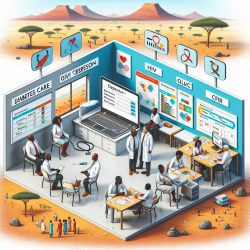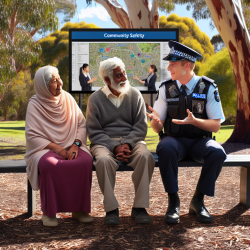As educators and therapists, our ultimate goal is to unlock the potential within each student, particularly those with special needs. A recent study, Facilitating Spontaneous Speech in Mentally Retarded Adolescents, provides valuable insights into enhancing communication skills in this demographic. This research explores the balance between facilitating and inhibiting verbal behaviors in eliciting spontaneous speech, offering a fresh perspective on speech therapy and educational strategies.
The study, conducted by Michael R. Seitz, Denise Gaudet-McPhail, and Joanne Brown, challenges the traditional notion that facilitating verbal techniques (such as modeling and expansion) significantly outperform inhibiting techniques (commands and directions) in promoting spontaneous speech. Surprisingly, the research found that both approaches increased verbal output to a similar extent among mentally retarded adolescents. This finding suggests a more nuanced understanding of how verbal interactions can stimulate speech and language development in students with intellectual disabilities.
Key Takeaways for Practitioners:
- Variety in Verbal Interaction: The study suggests incorporating a mix of facilitating and inhibiting verbal behaviors in speech therapy and educational settings. This approach can create a dynamic learning environment that encourages students to engage in communication.
- Personalized Strategies: Understanding the individual needs and responses of each student is crucial. Some may benefit more from a structured approach, while others thrive in a more open-ended dialogue. Tailoring interactions to suit each student's unique profile can enhance engagement and progress.
- Encouraging Spontaneity: Creating opportunities for spontaneous speech in less structured settings can be beneficial. Activities that encourage free expression and interaction can help students practice and improve their communication skills in a natural context.
- Further Research: The study highlights the need for continued research into effective communication strategies for mentally retarded adolescents. Exploring a wider range of verbal behaviors and their impacts can lead to more effective teaching and therapy methods.
For educators and speech therapists, the implications of this study underscore the importance of flexibility and creativity in our approaches to language development. By blending different verbal techniques and closely observing their effects on individual students, we can better support the growth of communication skills in mentally retarded adolescents.
This research invites us to rethink our strategies and consider the broad spectrum of verbal interactions that can facilitate language development. It also emphasizes the significance of adapting our methods to the diverse needs of our students, fostering an environment where every child has the opportunity to express themselves and connect with others.
For those interested in delving deeper into the methodologies and findings of this study, I highly recommend reading the original research paper. It offers a comprehensive look at the experiment and its implications for educators and therapists working with mentally retarded adolescents. To read the original research paper, please follow this link: Facilitating Spontaneous Speech in Mentally Retarded Adolescents.










